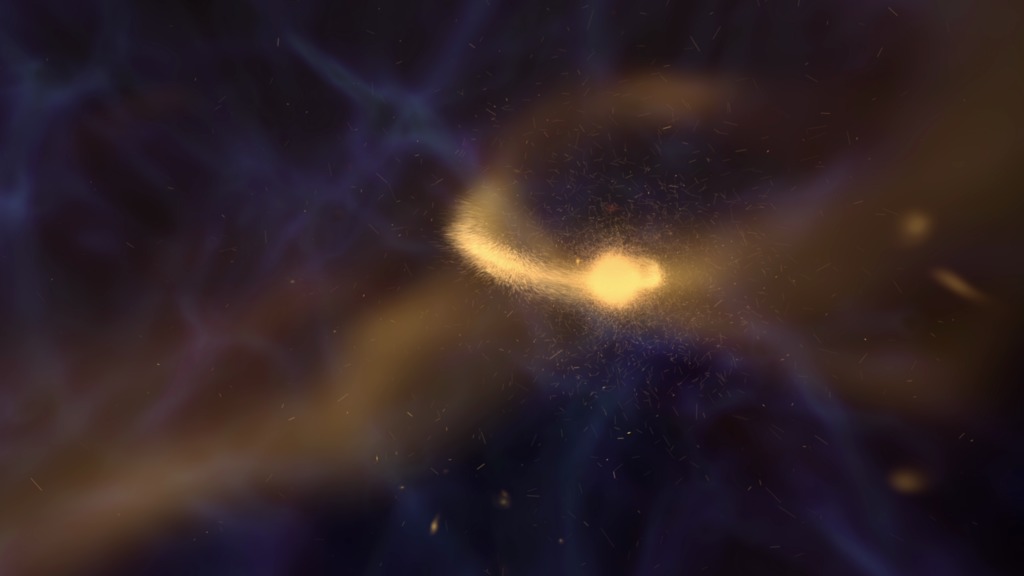Galaxy Formation
Galaxies are collections of stars, gas, dust and dark matter held together by gravity. Their appearance and composition are shaped over billions of years by interactions with groups of stars and other galaxies. Using supercomputers, scientists can look back in time and simulate how a galaxy may have formed in the early universe and grown into what we see today. Galaxies are thought to begin as small clouds of stars and dust swirling through space. As other clouds get close, gravity sends these objects careening into one another and knits them into larger spinning packs. Subsequent collisions can sling material toward a galaxy’s outskirts, creating extensive spiral arms filled with colonies of stars. Watch the video to see this process unfold.

See 13.7 billion years of cosmic evolution in under a minute.
This supercomputer simulation shows the formation of galaxies similar to the Milky Way over 13.7 billion years.

When galaxies get close, gravity pulls them together, causing a collision.

Following a collision, stars and other material begin settling into orbits around a new galactic core.

Millions or even billions of years may pass before galaxies merge completely into a single larger galaxy.
Credits
Please give credit for this item to:
NASA's Goddard Space Flight Center
Video and images courtesy of NASA/GSFC/National Center for Supercomputing/Advanced Visualization Laboratoy/B. O'Shea and M. Norman
-
Animators
- Donna Cox (AVL NCSA/University of Illinois)
- Robert Patterson (AVL NCSA/University of Illinois)
- Matthew Hall (AVL NCSA/University of Illinois)
- Stuart Levy (AVL NCSA/University of Illinois)
-
Producers
- Michael McClare (HTSI)
- Donna Cox (AVL NCSA/University of Illinois)
-
Scientists
- Brian O'Shea (Michigan State University)
- Michael Norman (University of California, San Diego)
-
Writer
- Matt Davenport (USRA)
Release date
This page was originally published on Tuesday, May 13, 2014.
This page was last updated on Wednesday, May 3, 2023 at 1:50 PM EDT.
